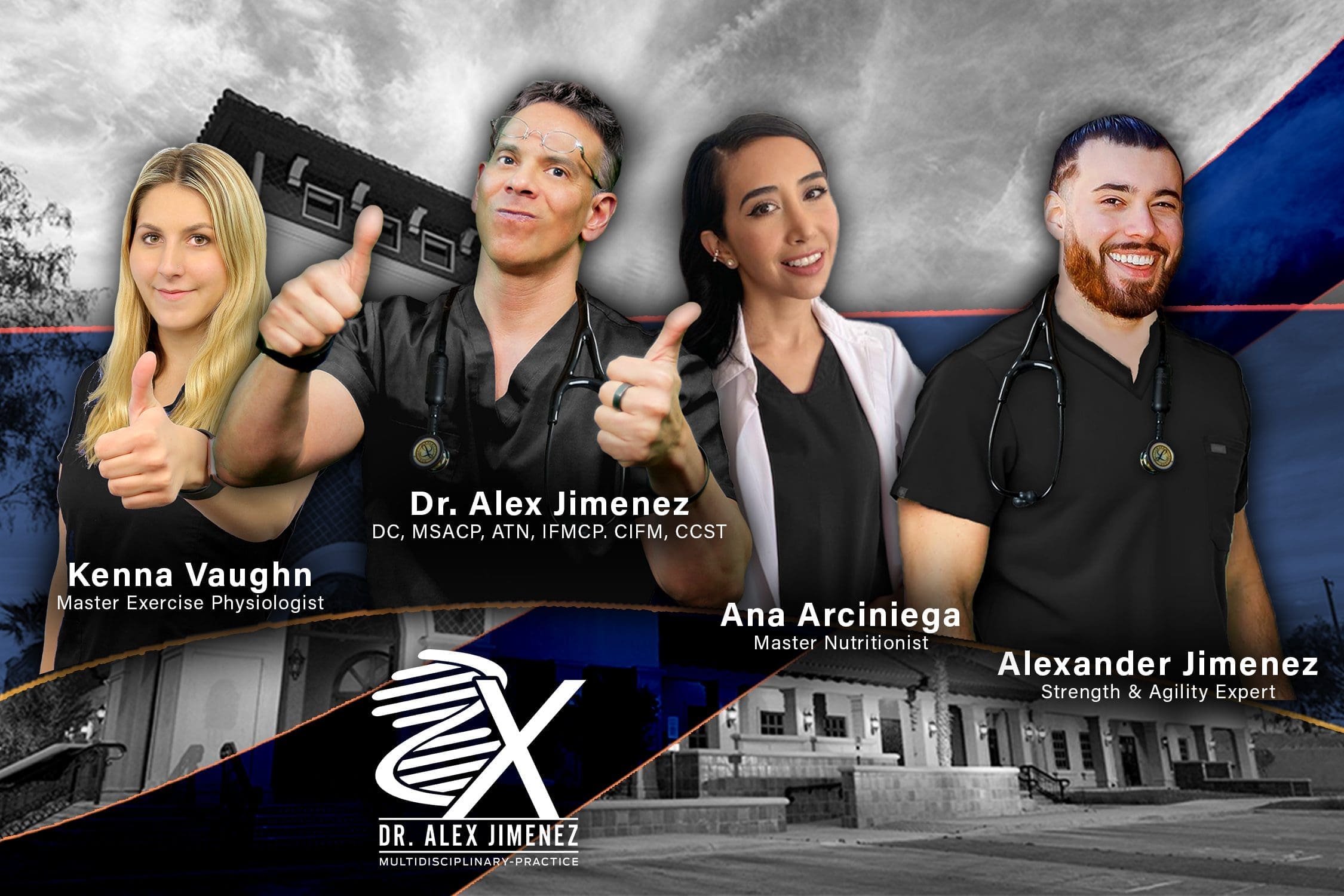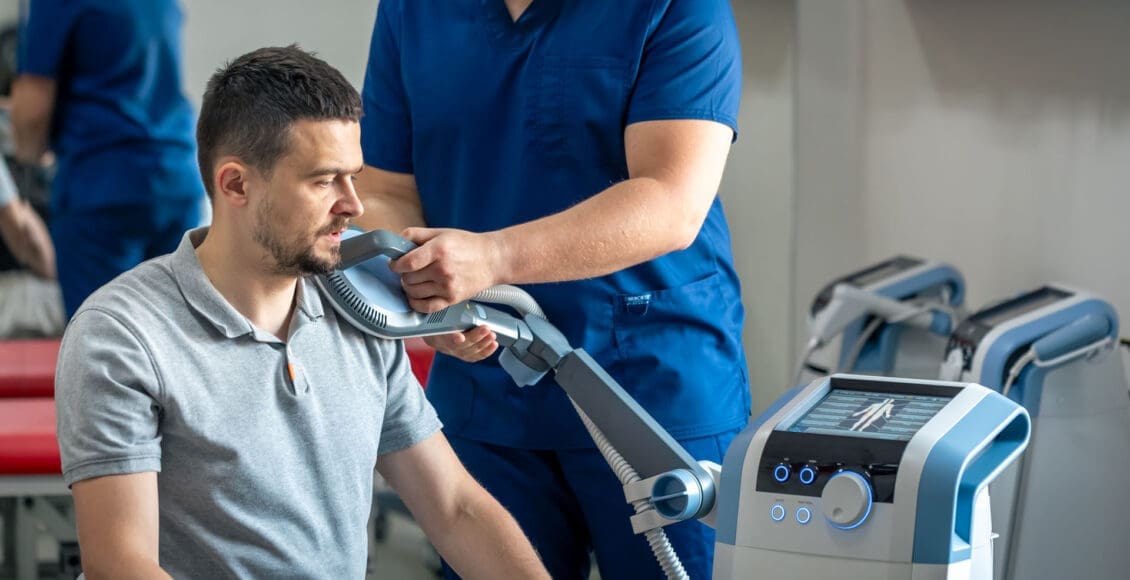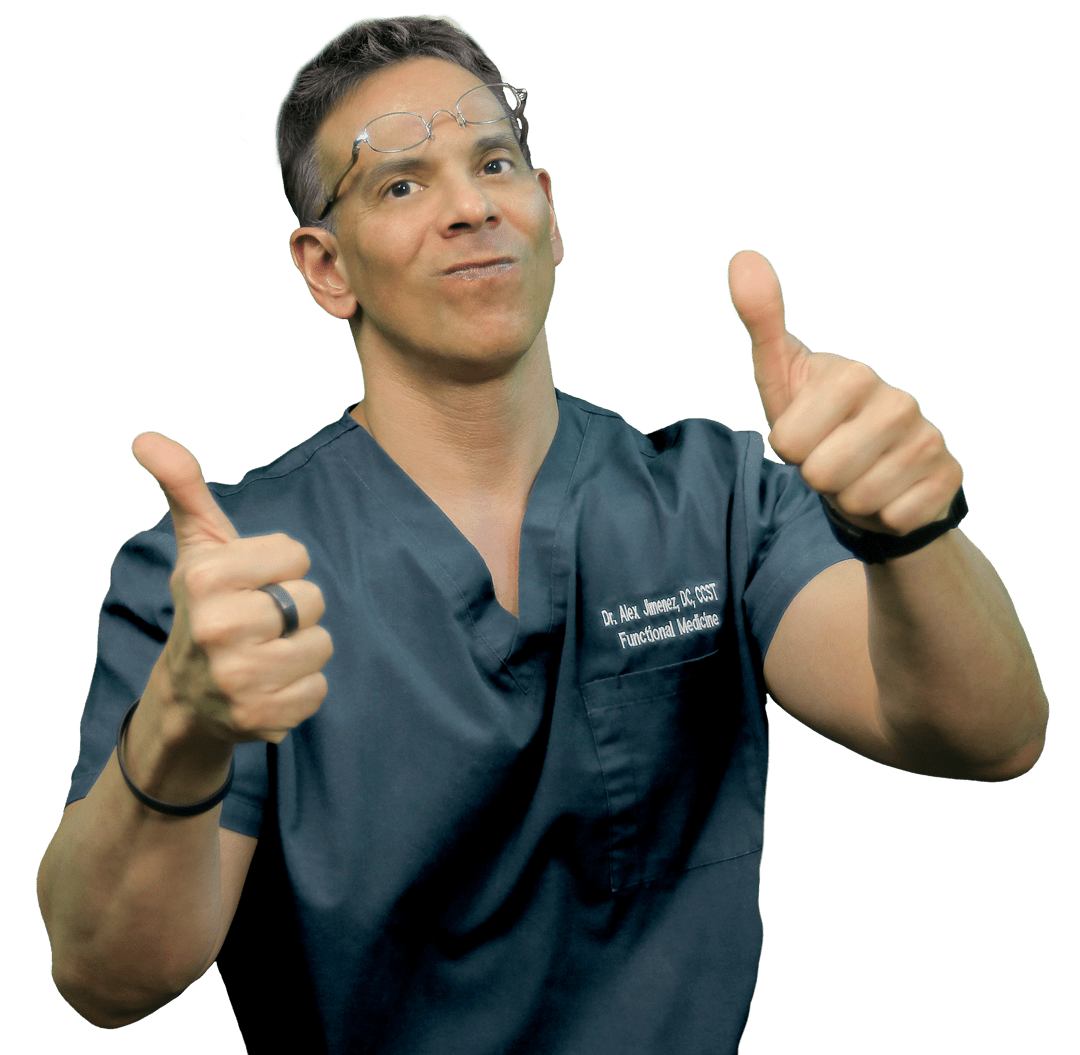Table of Contents
Car Accidents and Nerve Injuries: A Biomechanical and Chiropractic Approach

Motor vehicle accidents (MVAs) often result in more than just bumps and bruises. One of the most overlooked consequences is nerve injury, which can affect everything from how we move to how we feel temperature or pain. These injuries don’t just go away on their own—they often require expert attention, particularly from professionals who understand both the biomechanics of trauma and the structure of the nervous system.
On ChiropracticScientist.com, we explore the intersection of evidence-based chiropractic care, integrative medicine, and scientific biomechanics. This article breaks down how car crashes lead to nerve injuries, how to recognize them, and how chiropractors and integrative practitioners like Dr. Alexander Jimenez use advanced diagnostics and therapeutic techniques to help patients recover.
Understanding the Biomechanics of Nerve Injury in Car Accidents
During an MVA, the body experiences sudden acceleration and deceleration forces. These movements stress the spine, joints, muscles, and nerve pathways. Nerve injuries can happen from:
- Compression: Vertebral misalignment or swelling can press on nerve roots.
- Stretching: Sudden forces can overstretch nerve fibers.
- Avulsion: In severe trauma, nerves can tear away from their spinal connections.
These mechanisms disrupt communication between the brain and body. Chiropractors trained in spinal biomechanics can assess these patterns and develop targeted plans for recovery.
Novus Spine Center, n.d.
Grabban & Durando, n.d.
Types of Nerves Affected: Sensory, Motor, and Autonomic
Car crashes can affect all three major types of nerves:
- Sensory Nerves – Control sensations like touch, pain, and temperature.
- Motor Nerves – Regulate muscle contractions and body movements.
- Autonomic Nerves – Manage automatic processes like heart rate, digestion, and blood pressure.
When nerves are injured, the results may include:
- Tingling, numbness, or burning (sensory)
- Weakness or paralysis (motor)
- Irregular heartbeat or digestive problems (autonomic)
These symptoms often stem from spinal misalignment, inflammation, or disc injuries—all of which fall within the chiropractic scope of care.
Mayo Clinic, n.d.
Hopkins Medicine, n.d.
Common Post-Accident Nerve Injuries
Chiropractic and orthopedic teams frequently treat the following nerve-related conditions after a crash:
Whiplash and Cervical Nerve Strain
Whiplash causes the neck to snap backward and forward, damaging the soft tissues and cervical nerve roots. The resulting nerve impingement can create headaches, arm numbness, and radiating pain.
Herniated Discs and Sciatica
The impact from a crash may cause spinal discs to shift out of place. A herniated disc can press on nerves in the lumbar spine, leading to sciatica—sharp pain that runs from the back down the leg.
Brachial Plexus Injuries
This network of nerves in the shoulder can be stretched or torn during side impacts or rollovers, leading to weakness, numbness, or even partial paralysis of the arm.
Mayo Clinic, n.d.
Hopkins Medicine, n.d.
Classifying Nerve Injuries: A Scientific View
Understanding the severity of a nerve injury is essential for determining the right treatment plan. Chiropractors and medical professionals often refer to Seddon’s classification, a scientific system that breaks nerve damage into three main categories:
Neuropraxia – Mild Compression
This is a temporary block in nerve conduction without structural damage. It often results from whiplash or minor compression injuries. Recovery may take days to weeks with conservative care like spinal adjustments and anti-inflammatory protocols.
Axonotmesis – Moderate Damage
Here, the inner part of the nerve is damaged, but the outer covering remains intact. Symptoms may persist for months. Chiropractic treatment is often combined with functional rehabilitation to promote regeneration and restore mobility.
Neurotmesis – Severe Disruption
In this case, the nerve is completely severed or torn. While chiropractic therapy can support surrounding tissues and reduce inflammation, surgery is typically needed. Chiropractors can assist in pre- and post-surgical rehabilitation and coordinate care within a multidisciplinary team.
Physio-Pedia, n.d.
LWW Journal of Neurorehabilitation, 2019
Evidence-Based Diagnostic Tools in Chiropractic Care
Modern chiropractic care utilizes objective diagnostics to assess nerve damage precisely. These include:
Electromyography (EMG) and Nerve Conduction Studies (NCS)
These tests measure electrical activity in muscles and nerves, helping determine the location and severity of nerve damage.
MRI and CT Scans
These imaging tools are crucial when evaluating disc herniations, bone fractures, or structural shifts that may be compressing nerves.
Digital Postural Analysis
Many chiropractors utilize posture-scanning software and biomechanical assessments to identify compensatory patterns resulting from nerve dysfunction.
This evidence-based approach helps build accurate diagnoses and track recovery over time—especially in personal injury cases where documentation is key.
Hoffmann Personal Injury Lawyers, n.d.
Kentucky Courage, n.d.
Dr. Alexander Jimenez: A Dual-Scope Approach to Nerve Recovery
In El Paso, Dr. Alexander Jimenez, DC, APRN, FNP-BC, is a leader in dual-scope care. His background in chiropractic medicine and nurse practitioner primary care allows him to:
- Perform advanced neurological exams
- Order and interpret imaging (MRI, CT, EMG)
- Deliver chiropractic adjustments
- Prescribe medications when necessary
- Offer functional medicine and integrative therapies
- Document findings for legal and insurance claims
Dr. Jimenez employs a biomechanical lens to understand how spinal trauma leads to downstream nerve damage. His integrated care model facilitates the restoration of movement, reduces inflammation, and supports the healing of the nervous system.
Dr. Jimenez – Clinical Website
Dr. Jimenez – LinkedIn
Dr. Jimenez – WhatsApp Channel
Chiropractic Treatments for Nerve Recovery
Chiropractors trained in neuromusculoskeletal rehabilitation use various methods to relieve nerve pressure, enhance healing, and restore function. These therapies are grounded in both clinical experience and biomechanical science.
1. Spinal Adjustments and Mobilization
When the spine is misaligned—often due to trauma like whiplash or impact—it can compress or irritate nerve roots. Gentle, controlled chiropractic adjustments help realign vertebrae and reduce pressure on nerves. Mobilization techniques also improve joint function and fluid motion in the spine.
2. Decompression Therapy
Non-surgical spinal decompression can help reduce disc bulges and herniations that compress spinal nerves. It is particularly effective for cervical and lumbar radiculopathy (radiating nerve pain).
3. Soft Tissue Therapy
Trigger point therapy, instrument-assisted soft tissue mobilization (IASTM), and myofascial release reduce muscular tension and inflammation around nerve pathways. This supports nerve gliding and improves circulation.
4. Cold Laser Therapy
Low-level laser therapy (LLLT) is used to promote healing at the cellular level. Studies show that LLLT can enhance nerve regeneration and reduce pain and inflammation post-injury.
Palermo Law Group, n.d.
Baltimore Peripheral Nerve Pain Center, n.d.
Integrative Strategies to Support Nerve Healing
An evidence-based chiropractic approach goes beyond adjustments. It involves comprehensive support for the body’s healing systems.
Functional Nutrition
Nutrients like B-complex vitamins, omega-3 fatty acids, and antioxidants are vital for nerve repair. Chiropractors with training in functional medicine often recommend tailored diets and supplements to reduce inflammation and support regeneration.
Postural Correction
Poor posture following trauma can worsen nerve compression. A biomechanical evaluation helps identify improper loading patterns, which can be corrected with postural exercises and ergonomic support.
Nerve Gliding Exercises
Also known as neurodynamics, these exercises promote nerve mobility and reduce nerve sensitivity. They are often used to treat conditions such as sciatica, thoracic outlet syndrome, and carpal tunnel syndrome.
Lifestyle Education
Patients are educated on avoiding repetitive stress, poor sleeping positions, and inflammatory foods—all of which can aggravate nerve symptoms.
This multi-dimensional approach reflects what ChiropracticScientist.com stands for: merging scientific evidence with hands-on care for sustainable healing.
Long-Term Risks of Untreated Nerve Injuries
If left untreated, nerve injuries from motor vehicle accidents can lead to chronic complications. These risks include:
- Permanent numbness or tingling
- Muscle weakness or atrophy
- Loss of coordination
- Chronic pain syndromes
- Autonomic dysfunction (e.g., bowel or bladder issues)
Even mild compression injuries can worsen if spinal misalignments are not corrected. Over time, compensatory movement patterns can lead to further degeneration of the spine, discs, and joints.
This highlights the importance of early chiropractic intervention. Chiropractors trained in functional neurology and spinal biomechanics can identify subtle changes that may indicate underlying nerve stress before they become irreversible.
McNicholas Law, n.d.
Grabban & Durando, n.d.
The Role of Chiropractors in Legal and Medical Documentation
In personal injury cases, clear documentation of nerve damage is crucial for achieving favorable legal outcomes. Chiropractors like Dr. Alexander Jimenez provide:
- Objective findings from orthopedic and neurological exams
- Functional diagnoses correlating trauma to nerve symptoms
- Detailed reports supporting the mechanism of injury
- Progress notes and evidence of treatment compliance
- Collaboration with legal and medical teams
Dr. Jimenez’s dual-scope license enables him to provide both medical and chiropractic narratives, offering attorneys a comprehensive view of the injury. This strengthens the patient’s case and ensures proper compensation for their pain, limitations, and future care needs.
Dr. Jimenez – Clinical Website
Dr. Jimenez – Threads
Dr. Jimenez – Instagram
Conclusion: A Scientific and Healing Approach to Nerve Recovery
Nerve injuries after a car accident can affect every part of life—movement, sensation, and even internal organ function. Understanding the biomechanics of trauma and the science of healing is essential for a full recovery.
At ChiropracticScientist.com, we advocate for comprehensive, evidence-based care. Chiropractors who combine hands-on treatment with advanced diagnostics and integrative support can offer lasting relief from nerve-related pain and dysfunction.
In El Paso, Dr. Alexander Jimenez is leading the way by blending chiropractic adjustments, spinal biomechanics, functional medicine, and legal documentation. His patients benefit from a dual-scope model that treats the body holistically while addressing the legal and clinical needs of personal injury cases.
References
Alexander Orthopaedics. (n.d.). Common car accident injuries.
Baltimore Peripheral Nerve Pain Center. (n.d.). Car accident injury and nerve damage.
Grabban & Durando. (n.d.). Different types of nerve injuries.
Hoffmann Personal Injury Lawyers. (n.d.). 4 types of nerve injuries you may suffer in a car accident.
Hopkins Medicine. (n.d.-a). Brachial plexus injuries.
Hopkins Medicine. (n.d.-b). Types of peripheral nerve damage that may need surgery.
Kentucky Courage. (n.d.). Nerve damage after car accidents.
LWW Journal of Neurorehabilitation. (2019). Peripheral nerve injuries: Electrophysiology for diagnosis and prognosis.
Mayo Clinic. (n.d.-a). Brachial plexus injury.
Mayo Clinic. (n.d.-b). Peripheral nerve injuries.
McNicholas Law. (n.d.). Permanent nerve damage after a car accident.
Novus Spine Center. (n.d.). Types of pain following an accident.
Palermo Law Group. (n.d.). Can carpal tunnel be caused by a car accident?.
Physio-Pedia. (n.d.). Classification of peripheral nerve injury.
Wallace Wins. (n.d.). Whiplash neck injury.
Post Disclaimer
Professional Scope of Practice *
The information herein on "Nerve Compression After Collisions: Injury Breakdown" is not intended to replace a one-on-one relationship with a qualified health care professional or licensed physician and is not medical advice. We encourage you to make healthcare decisions based on your research and partnership with a qualified healthcare professional.
Blog Information & Scope Discussions
Welcome to El Paso's Premier Wellness, Personal Injury Care Clinic & Wellness Blog, where Dr. Alex Jimenez, DC, FNP-C, a Multi-State board-certified Family Practice Nurse Practitioner (FNP-BC) and Chiropractor (DC), presents insights on how our multidisciplinary team is dedicated to holistic healing and personalized care. Our practice aligns with evidence-based treatment protocols inspired by integrative medicine principles, similar to those found on this site and our family practice-based chiromed.com site, focusing on restoring health naturally for patients of all ages.
Our areas of multidisciplinary practice include Wellness & Nutrition, Chronic Pain, Personal Injury, Auto Accident Care, Work Injuries, Back Injury, Low Back Pain, Neck Pain, Migraine Headaches, Sports Injuries, Severe Sciatica, Scoliosis, Complex Herniated Discs, Fibromyalgia, Chronic Pain, Complex Injuries, Stress Management, Functional Medicine Treatments, and in-scope care protocols.
Our information scope is multidisciplinary, focusing on musculoskeletal and physical medicine, wellness, contributing etiological viscerosomatic disturbances within clinical presentations, associated somato-visceral reflex clinical dynamics, subluxation complexes, sensitive health issues, and functional medicine articles, topics, and discussions.
We provide and present clinical collaboration with specialists from various disciplines. Each specialist is governed by their professional scope of practice and their jurisdiction of licensure. We use functional health & wellness protocols to treat and support care for musculoskeletal injuries or disorders.
Our videos, posts, topics, and insights address clinical matters and issues that are directly or indirectly related to our clinical scope of practice.
Our office has made a reasonable effort to provide supportive citations and has identified relevant research studies that support our posts. We provide copies of supporting research studies upon request to regulatory boards and the public.
We understand that we cover matters that require an additional explanation of how they may assist in a particular care plan or treatment protocol; therefore, to discuss the subject matter above further, please feel free to ask Dr. Alex Jimenez, DC, APRN, FNP-BC, or contact us at 915-850-0900.
We are here to help you and your family.
Blessings
Dr. Alex Jimenez DC, MSACP, APRN, FNP-BC*, CCST, IFMCP, CFMP, ATN
email: coach@elpasofunctionalmedicine.com
Multidisciplinary Licensing & Board Certifications:
Licensed as a Doctor of Chiropractic (DC) in Texas & New Mexico*
Texas DC License #: TX5807, Verified: TX5807
New Mexico DC License #: NM-DC2182, Verified: NM-DC2182
Multi-State Advanced Practice Registered Nurse (APRN*) in Texas & Multi-States
Multistate Compact APRN License by Endorsement (42 States)
Texas APRN License #: 1191402, Verified: 1191402 *
Florida APRN License #: 11043890, Verified: APRN11043890 *
License Verification Link: Nursys License Verifier
* Prescriptive Authority Authorized
ANCC FNP-BC: Board Certified Nurse Practitioner*
Compact Status: Multi-State License: Authorized to Practice in 40 States*
Graduate with Honors: ICHS: MSN-FNP (Family Nurse Practitioner Program)
Degree Granted. Master's in Family Practice MSN Diploma (Cum Laude)
Dr. Alex Jimenez, DC, APRN, FNP-BC*, CFMP, IFMCP, ATN, CCST
My Digital Business Card
RN: Registered Nurse
APRNP: Advanced Practice Registered Nurse
FNP: Family Practice Specialization
DC: Doctor of Chiropractic
CFMP: Certified Functional Medicine Provider
MSN-FNP: Master of Science in Family Practice Medicine
MSACP: Master of Science in Advanced Clinical Practice
IFMCP: Institute of Functional Medicine
CCST: Certified Chiropractic Spinal Trauma
ATN: Advanced Translational Neutrogenomics





 Again, We Welcome You.
Again, We Welcome You.
Comments are closed.